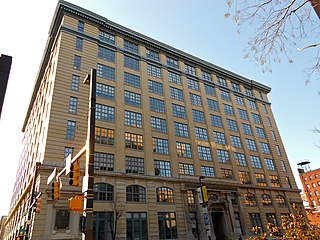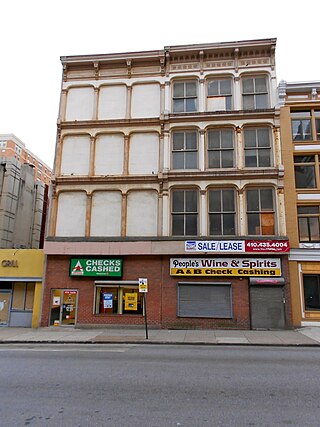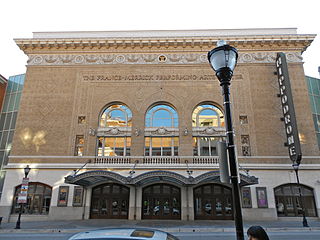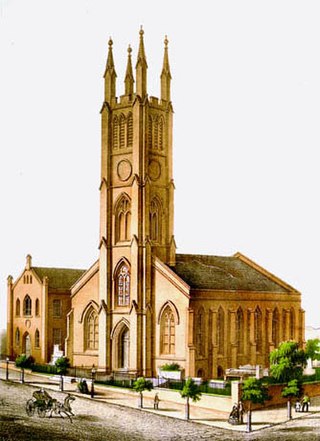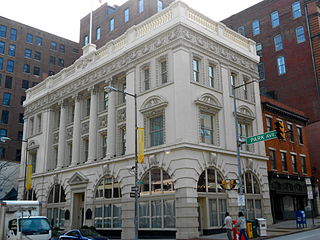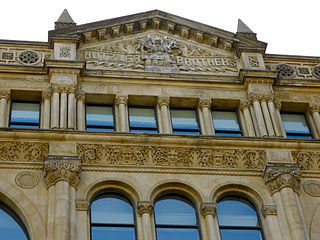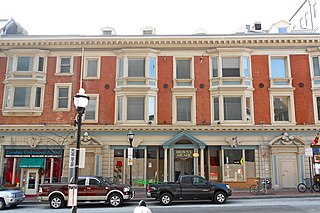Self-guided Sightseeing Tour #2 in Baltimore, United States
Legend
Tour Facts
2.2 km
52 m
Experience Baltimore in United States in a whole new way with our free self-guided sightseeing tour. This site not only offers you practical information and insider tips, but also a rich variety of activities and sights you shouldn't miss. Whether you love art and culture, want to explore historical sites or simply want to experience the vibrant atmosphere of a lively city - you'll find everything you need for your personal adventure here.
Activities in BaltimoreIndividual Sights in BaltimoreSight 1: Paca-Pratt Building
Sonneborn Building, also known as Paca-Pratt Building, is a historic loft building in Baltimore, Maryland, United States. Designed by Theodore Wells Pietsch, it is a nine-story loft building constructed in 1905 of "fireproof" reinforced-concrete construction, faced in buff-colored brick, with a coursed ashlar foundation and stone trim. Its detailing reflects the Neoclassical Revival of the early 20th century. It was built for Henry Sonneborn and Company as a vertical clothing manufactory and was the tallest and largest strictly manufacturing building in the city of Baltimore.
Sight 2: L. Frank & Son Building
L. Frank & Son Building is a historic retail building located at Baltimore, Maryland, United States. It is a four-story brick commercial building with a cast-iron façade, built about 1875. It was constructed for Samuel Stein & Bros., and occupied by a dealer in iron ranges and furnaces, and later a series of shoe and clothing manufacturers.
Sight 3: The Hippodrome Theatre at the France-Merrick Performing Arts Center
The Hippodrome Theatre is a theater in Baltimore, Maryland.
Sight 4: Westminster Presbyterian Church
Westminster Hall and Burying Ground is a graveyard and former church located at 519 West Fayette Street in Baltimore, Maryland, United States. It is currently part of the grounds of the University of Maryland's School of Law. It occupies the southeast corner of West Fayette and North Greene Street on the west side of downtown Baltimore. It sits across from the Baltimore VA hospital and is the burial site of Edgar Allan Poe (1809–1849) and several politicians and military officials. The complex was declared a national historic district in 1974.
Wikipedia: Westminster Hall and Burying Ground (EN), Website
Sight 5: Brewers Exchange
Brewers Exchange, also known as Murdock Place, is a historic office building located at Baltimore, Maryland, United States. It is a three-story Renaissance Revival style building designed by Joseph Evans Sperry (1854-1930) and built in 1896. The façade is faced with terra cotta and includes such decorative elements as two-story half-round Ionic pilasters, cartouches, pediments, window surrounds, a garland frieze, and a balustrade at the edges of a flat roof. It was used by the exchange for only a short time.
Sight 6: Hutzler Brothers Palace Building
The Hutzler Brothers Palace Building is a historic flagship department store building located at Baltimore, Maryland, United States and built by Hutzler's. It was constructed in 1888, with a south bay added in 1924.
Sight 7: Brown's Arcade
Brown's Arcade is a historic retail and office building located at Baltimore, Maryland, United States. It consists of four early 19th century brick rowhouses. Architect Henry F. Brauns redesigned a row of four, three story buildings in 1904 into the original Brown's Arcade, with the application of Colonial Revival details over the original Federal-style façade. It was converted to a series of small shops; bordering a straight central walkway with offices above. The rear courtyard contains two-story brick structures with shed roofs and a two-story Renaissance Revival style structure.
Share
How likely are you to recommend us?
Disclaimer Please be aware of your surroundings and do not enter private property. We are not liable for any damages that occur during the tours.
GPX-Download For navigation apps and GPS devices you can download the tour as a GPX file.
